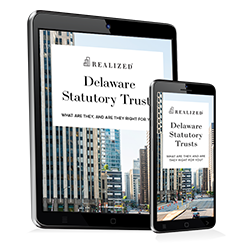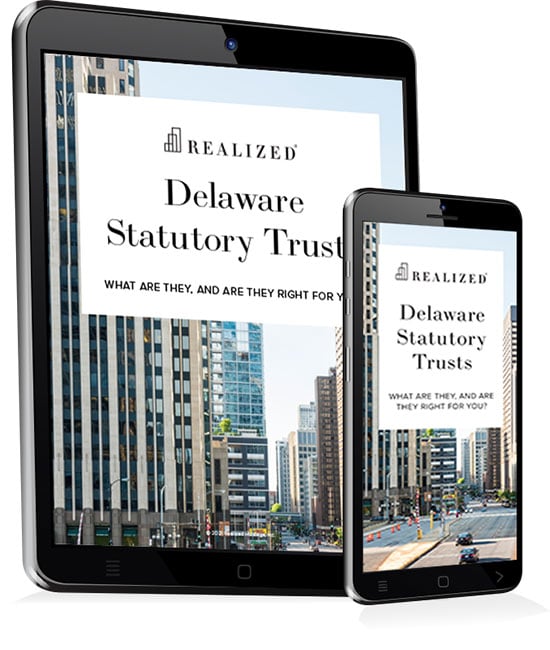
Investing in a Delaware Statutory Trust (DST) offers certain advantages, especially for those seeking passive real estate opportunities or completing a 1031 exchange. However, as with any investment, conducting thorough due diligence is essential to assess its suitability, risks, and alignment with your financial goals. This guide outlines key steps for evaluating a DST investment, with a focus on industry-specific considerations.
Understand the Property and Its Market
Begin by analyzing the underlying asset or portfolio of properties within the DST. Key considerations include:
- Property Type and Quality: Is the DST focused on multifamily housing, industrial properties, retail, or other asset classes? Class A properties in growing markets often offer stability, while Class B or C assets may target higher yields but carry increased risks.
- Location Analysis: Research the local market, including job growth, population trends, and economic stability. For instance, a DST investing in office spaces in a tech-driven metro area like Austin may offer different risk and reward dynamics compared to one focused on retail spaces in smaller towns.
Example: A DST with a portfolio of multifamily units in Atlanta might cite high occupancy rates due to the city’s consistent population growth. Verify these claims by reviewing third-party market reports.
Review the Sponsor’s Track Record
The sponsor plays a critical role in a DST’s performance. Investigate the following:
- Experience: Look for sponsors with extensive experience managing DST investments and real estate portfolios.
- Past Performance: While past performance isn’t a guarantee of future results, it can provide insights into how well the sponsor has managed similar properties and market conditions.
- Reputation: Check reviews, Better Business Bureau ratings, and industry recognition to gauge credibility.
Example: A sponsor with experience managing DSTs during economic downturns may indicate a capacity for implementing effective risk mitigation strategies.
Analyze the Private Placement Memorandum (PPM)
The Private Placement Memorandum (PPM) is a vital document outlining the investment’s terms, risks, and financial projections. Key areas to evaluate include:
- Projected Returns: Assess the cash flow and appreciation estimates. Are they realistic, given current market conditions?
- Fee Structure: Review upfront, ongoing, and backend fees. High fees can significantly reduce overall returns.
- Risk Disclosures: Look for risks such as tenant vacancies, interest rate fluctuations, or economic downturns.
Example: A DST might project a 5% annual return based on optimistic rent growth assumptions. Verify these projections by cross-checking with local market trends.
Assess Financing and Debt Structures
DSTs often involve properties with leveraged financing. Evaluate the following:
- Debt Terms: Understand the loan-to-value (LTV) ratio, interest rates, and loan maturity dates. Lower LTV ratios generally indicate less risk.
- Non-Recourse Loans: Confirm that any debt associated with the DST is non-recourse, meaning investors aren’t personally liable.
Example: A DST with an LTV ratio of 50% and fixed-rate financing is generally less sensitive to interest rate fluctuations and financial stress than one with 80% LTV and variable interest rates.
Examine Tenant and Lease Agreements
Since income from DSTs often comes from tenant rents, it’s important to analyze:
- Tenant Profiles: Are the tenants well-established businesses or individuals with strong credit?
- Lease Duration: Long-term leases with reputable tenants help minimize vacancy risk.
- Occupancy Rates: High occupancy rates indicate strong demand for the property type and location.
Example: A DST with a single anchor tenant, such as a national retail chain, may provide stable income. However, losing that tenant could significantly impact cash flow.
Verify Compliance with IRS Regulations
DSTs must adhere to strict IRS guidelines to qualify for 1031 exchange eligibility. Ensure the following:
- Structure Compliance: Confirm that the DST complies with the IRS's "seven deadly sins" rules, which restrict activities like refinancing or new development.
- 1031 Exchange Qualification: Consult a tax advisor to verify the DST’s suitability for your 1031 exchange needs.
Final Thoughts
Conducting thorough due diligence on a DST investment is essential for minimizing risks and ensuring it aligns with your financial objectives. By carefully evaluating the property, sponsor, financials, and compliance, you can make a well-informed decision.
Always consult with legal, financial, and tax advisors to fully understand the implications of investing in a DST. While investing in real estate through a DST can be a game-changer for passive income and tax deferral, success hinges on diligent research and careful planning.
The tax and estate planning information offered by the advisor is general in nature. It is provided for informational purposes only and should not be construed as legal or tax advice. Always consult an attorney or tax professional regarding your specific legal or tax situation.



